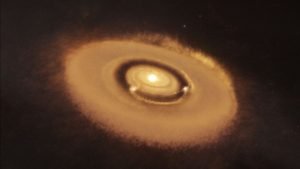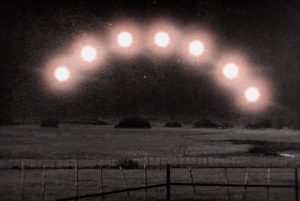Near the star where water was discovered, astronomers have found a third planet

 Currently, astronomers have confirmed the existence of 5,599 exoplanets outside the solar system. Another 10,157 objects are awaiting exoplanet candidate status.
Currently, astronomers have confirmed the existence of 5,599 exoplanets outside the solar system. Another 10,157 objects are awaiting exoplanet candidate status.
In a new study published in the journal Astronomy & Astrophysics, astronomers examined the protoplanetary disk surrounding the star PDS 70.
Two planets had previously been discovered there, as well as large concentrations of water vapor, indicating the possibility of the formation of Earth-like worlds covered in water. Now scientists have discovered a third planet. All three worlds have a unique orbital resonance, reports Universe Today.
The star PDS 70 is located at a distance of 370 light years from us and is very young by cosmic standards, being between 5.3 and 5.5 million years old. By studying the protoplanetary disk of gas and dust surrounding the star, astronomers have found evidence of a third planet in the system, which is still in its formation stage. The Webb Space Telescope was used for this.
As Focus already wrote , last year astronomers discovered water in the form of water vapor at a distance of 160 million km from the star.
Considering that water is located at almost the same distance from the Sun where the Earth arose, there was an assumption that the same planet could appear there. In any case, these data may change the understanding of how water appeared on Earth and how planets similar to it are formed.
Although past evidence has pointed to the presence of a third planet near PDS 70, in addition to the two already discovered, it is only now that astronomers have found confirmation that it most likely exists there, although it is still forming.
But for now the exoplanet is in the status of a candidate for this title, and if the observations are confirmed by the following studies, then it will most likely receive the name PDS 70 d, because two already known planets are called PDS 70 b and PDS 70 c.
The study authors believe that a third planet near the star PDS 70 may be in a 1:2:4 orbital resonance with the planets PDS 70 b and PDS 70 c. That is, its orbital period will be almost exactly two and four times shorter than those of the other two planets.
This can be observed in the Solar System, where the three moons of Jupiter (Ganymede, Europa and Io) are also in an orbital resonance of 1:2:4.
That there is a star system with three planets in this orbital relationship is an extremely important discovery, but this still needs to be confirmed.
Scientists say the new research could help better understand how planetary systems form and evolve. By observing young star systems at different stages of formation, astronomers hope to test different theories about how the solar system came to be.




